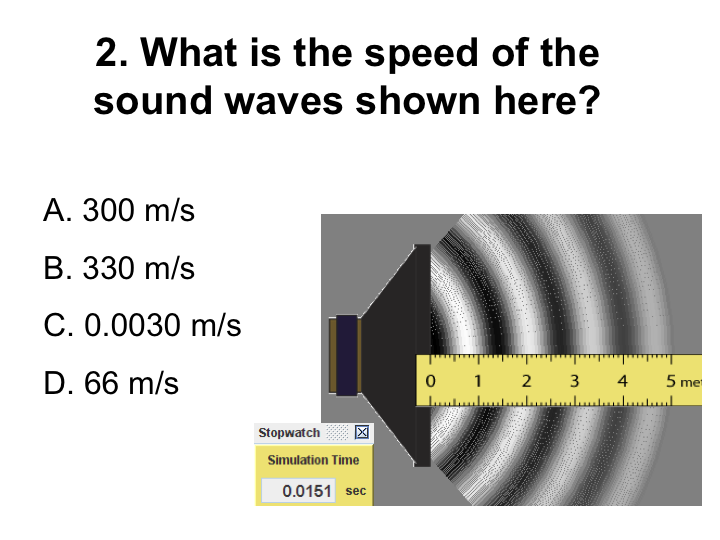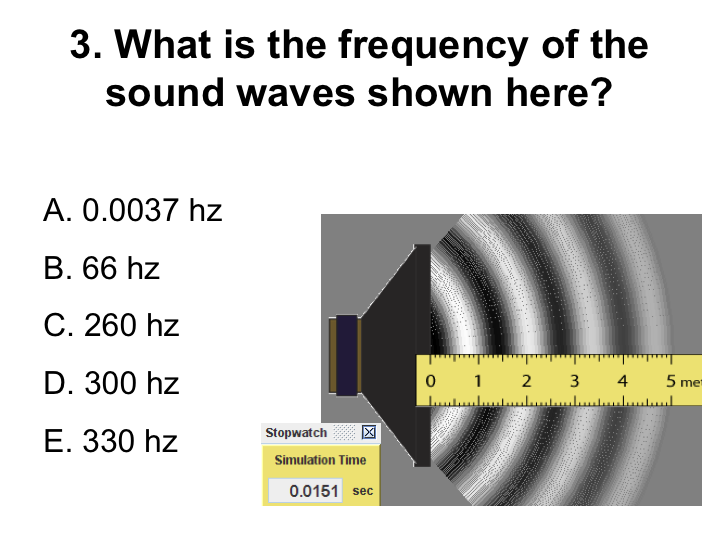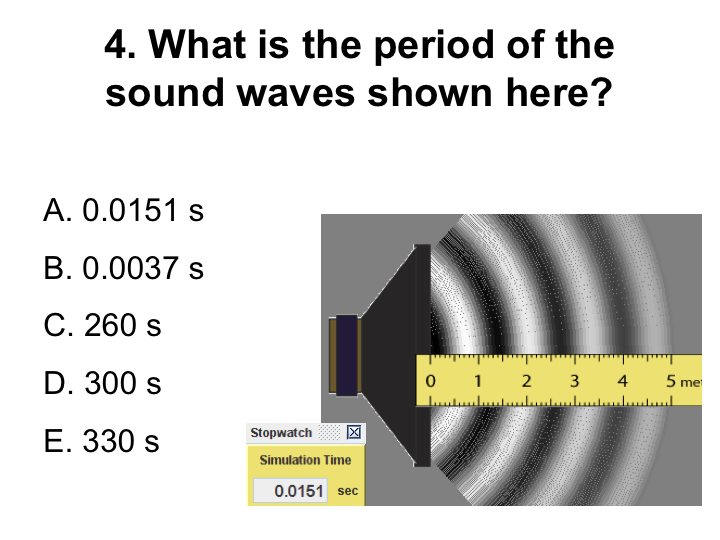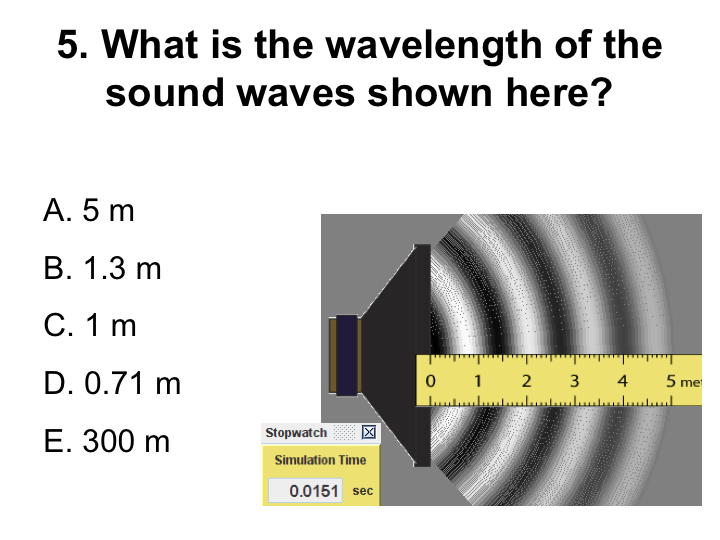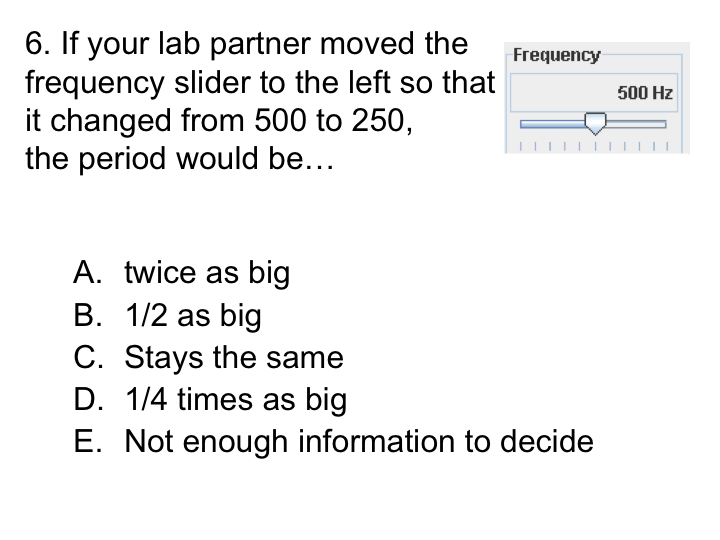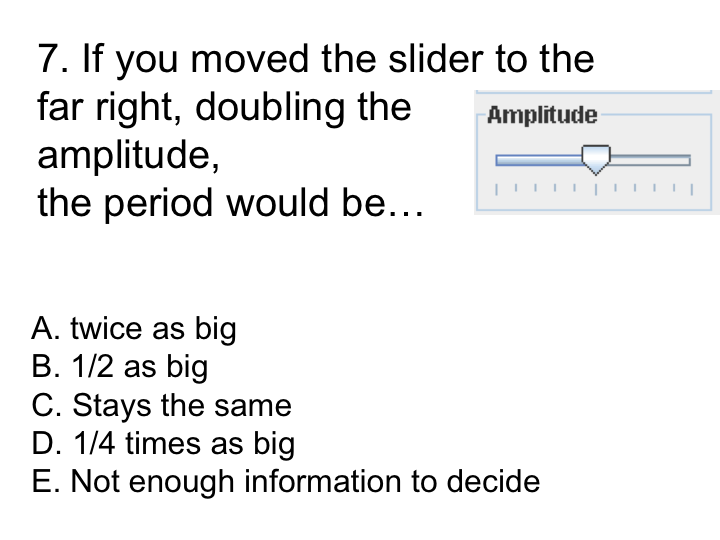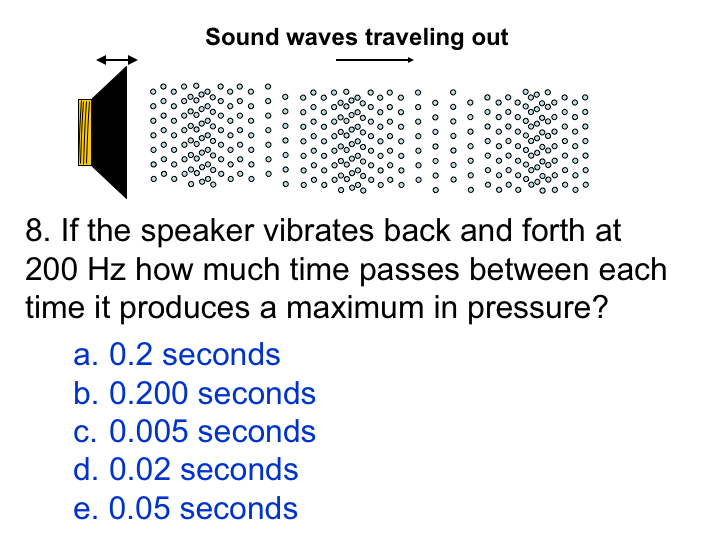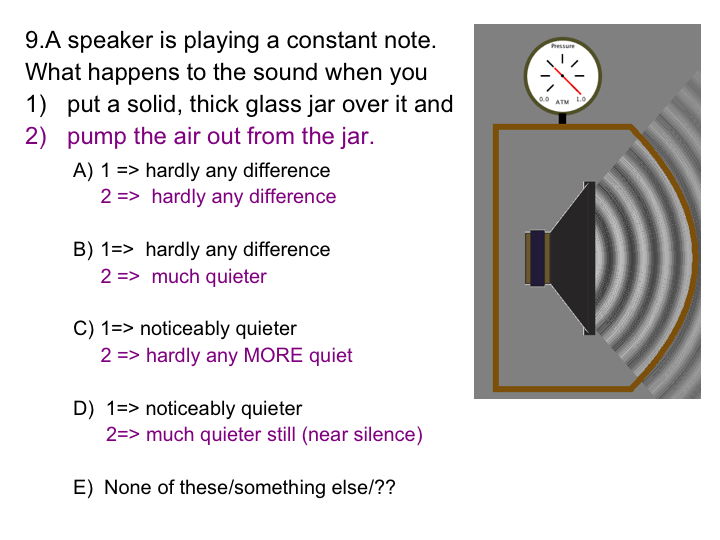Students go through concept question about the Sound Lab Unit
Science Topics
Parts of a Wave
Speed of Sound
Frequency
Process Skills
Measuring
Communicating
Observing
Grade Level
6-12
Preparation
None
Set-Up
5 minutes
Activity
30 minutes
Clean-Up
None
Learning Goals
Students will be able to:
- Explain how different sounds are modeled, described, and produced.
- Design ways to determine the speed, frequency, period, and wavelength of a sound.
Materials not in Kit
Computer
Projector/presentation equipment
Set-Up
Set-up the computer/projector to present the PowerPoint or PDF slides.
Doing the Activity
Students can work together to answer the questions as a class, or individually. Make sure to discuss the answers as a class since some of the questions can be interpreted in different ways.
The notes for each slide are also included in the PowerPoint and PDF presentations.
Slide 1: Remind the students what the learning goals are and to keep in mind the lab activies they have already done.
Slide 2: 1. A student started the speaker by clicking on the stopwatch. How many sound waves are there in this trial?
A) Because there are 3 dark areas
B) A lot of students confuse the ruler reading with other things
C) C is correct. Although you may get some argument about more exact numbers. I used 4 for all the following questions about this trial.
D) I count 8 light and dark areas total
Slide 3: 2. What is the speed of the sound waves shown here?
A) This is the number that our text uses for speed of sound in all problems
B) The correct answer is 5/.0151=331
C) This is .0151/5
D) This is 1/.0151
Slide 4: 3. What is the frequency of the sound waves shown here?
This shows how sound gets to one ear before it gets to the other ear.
A) This is .0151/4 waves
B) This is 1/.0151
C) This is correct, 4/.0151=260. The sim actually said 228 but I count 4 waves
D) This is the number that our text uses for speed of sound in all problems
E) 330 is speed
Slide 5: 4. What is the frequency of the sound waves shown here?
A) This is the stop watch time
B) B is correct 1/f is .0151/4 waves
C) This is frequency
D) This is the number that our text uses for speed of sound in all problems
E) 330 is speed
Slide 6: 5. What is the wavelength of the sound waves shown here?
A) The distance of first wavefront
B) This is correct: 5/4
C) 5/5 incase can’t count waves
D) 5/7 count dark and light areas
E) This is the number that our text uses for speed of sound in all problems
Slide 7: 6. If your lab partner moved the frequency slider to the left so that it changed from 500 to250, the period would be…
A)
Adapted From Pollock at CU 1240 course
Slide 8: 7. If you oved the slider to the far right, doubling the amplitude, the period would be…
C) they are independent
From Pollock
Slide 9: 8. If the speaker vibrates back and forth at 200 Hz, how much time passes between each time it produces a maximum in pressure?
From Pollock at CU 1240 course
Answer is c. 0.005 seconds.
Period = 1 second/ 200 cycles
= 0.005 seconds/cycle
His notes follow:
I skipped this one.
Kathy and Carl got…
A:1
B:0
C:78
D:20
E:2
Slide 10: 9. A speaker is playing a constant note. What happens to the sound when you
1) Put a solid, think glass jar over it and
2) pump out the air from the jar.
D.
I would show just the question before clicking to show the answers
Adapted from From Pollock at CU 1240 course
His notes follow:
86% correct. (I think B should be ok too, how could they know if glass makes noticeable diff or not?)
Slide 11: 10. If you could put a dust particle in front of the speaker, which choice below would show the motion of the dust particle?
C
Adapted From Pollock at CU 1240 course
His notes follow:
62% correct. It’s a subtle question for them! Good discussion starter?
Key Lesson Terminology
Compression – The region of the wave where air particles are compressed together.
Rarefaction – The region of the wave where air particles are spread apart.
Frequency – Wiggles per second (moves back and forth)
Amplitude – For transverse waves, it is the maximum height of the wave. Larger amplitudes create louder sounds.



